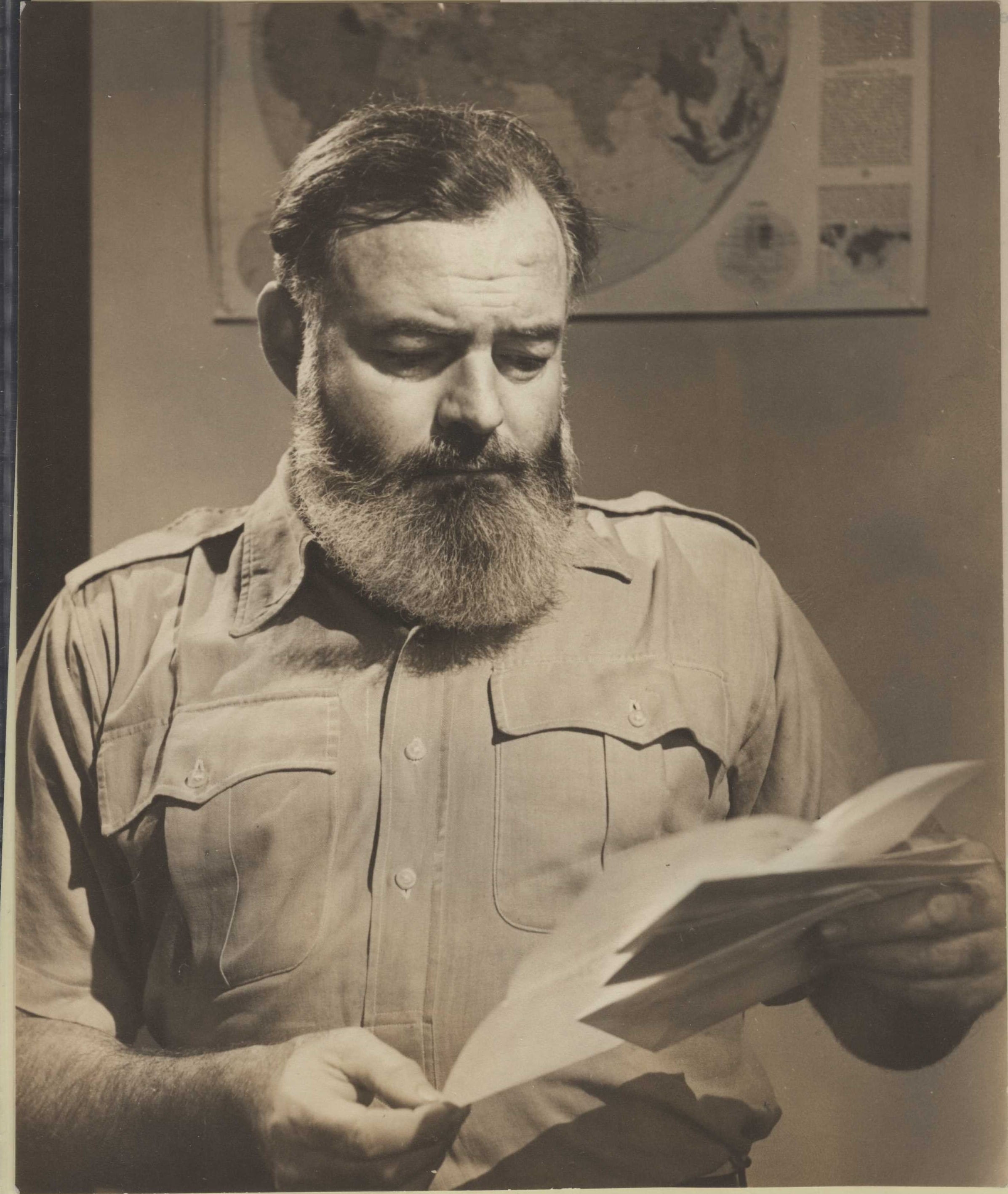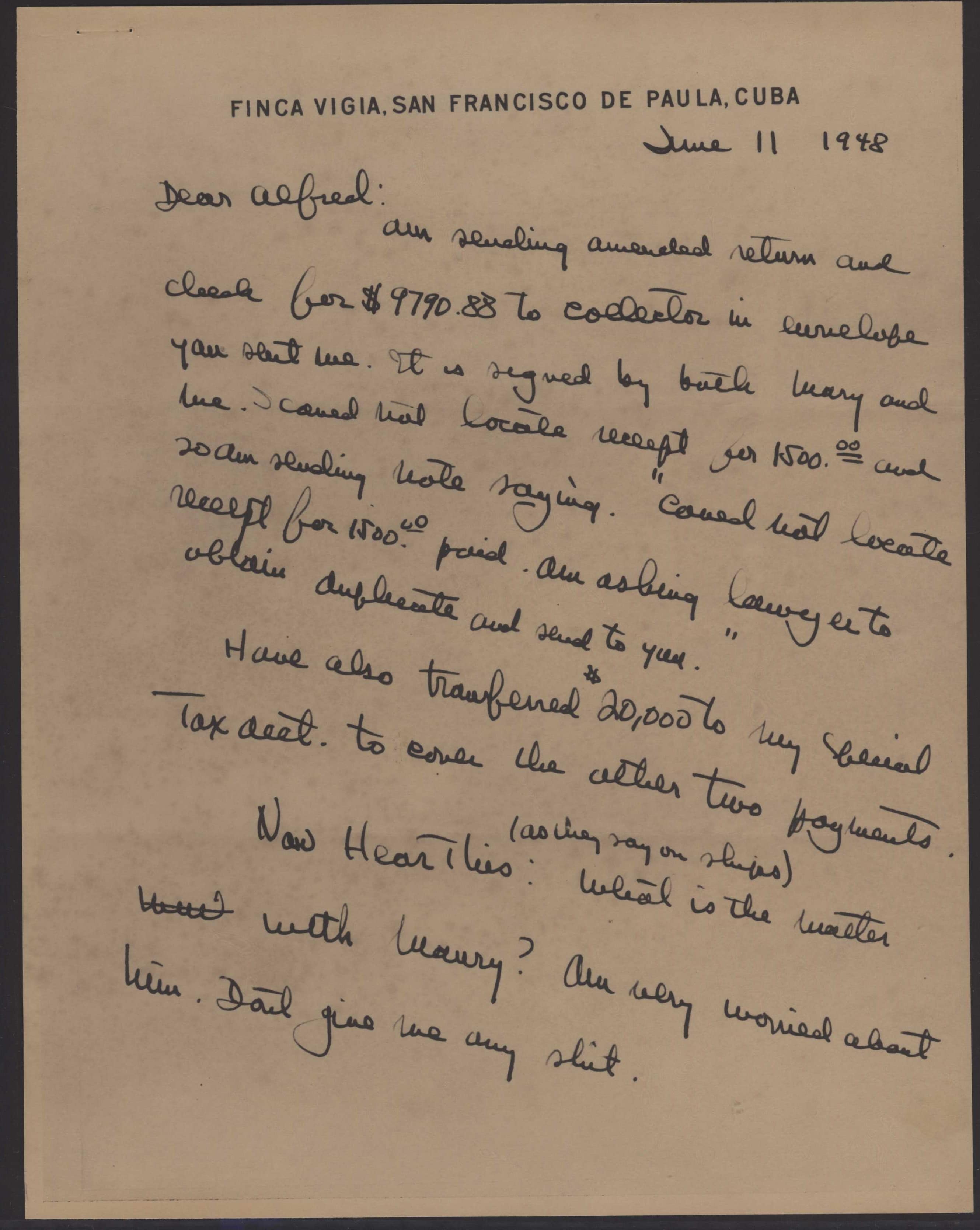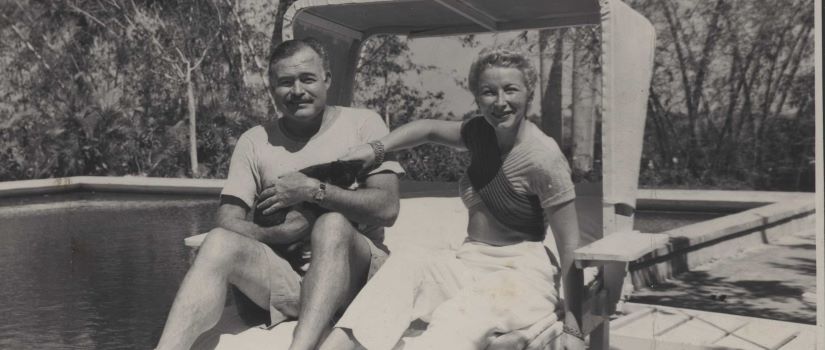A scholar’s long history of research in University Libraries’ Special Collections is helping to shed new light on the works of one of America’s most celebrated authors through the publication of new volumes of his correspondence.
The Hemingway Letters Project aims to publish a complete collection of Ernest Hemingway’s outgoing letters and correspondence throughout his career. Dr. Verna Kale, Associate Research Professor at Pennsylvania State University and Associate Editor of the Hemingway Letters Project, says that before this project, there really was no comprehensive way to read the outgoing Hemingway Correspondence. Eighty-five percent of the letters were unpublished at the beginning of the project.
 The project’s General Editor is Sandra Spanier, Professor of English and Women’s Studies
at Pennsylvania State University. The first volume, covering letters from 1907 to
1922, was published in 2011 and encompasses letters from Hemingway’s youth, his time
in World War I, and his arrival in Paris after the war. Now, thirteen years later,
Volume 6 is scheduled for release in May of this year.
The project’s General Editor is Sandra Spanier, Professor of English and Women’s Studies
at Pennsylvania State University. The first volume, covering letters from 1907 to
1922, was published in 2011 and encompasses letters from Hemingway’s youth, his time
in World War I, and his arrival in Paris after the war. Now, thirteen years later,
Volume 6 is scheduled for release in May of this year.
Kale, who made her most recent trip to USC to view the Hemingway papers in February, has a long research history with University Libraries, having visited The Irvin Department of Rare Books and Special Collections for the Hemingway project multiple times, as the collection is so extensive.
On this visit to USC, Kale spent time looking through the Matthew J. and Arlyn Bruccoli Collection of F. Scott Fitzgerald, the Maurice J. Speiser Papers, The Speiser and Easterling-Hallman Foundation Collection of Ernest Hemingway, and The C. Edgar and Julie Grissom Collection of Ernest Hemingway. Maurice Speiser was Hemingway’s attorney, with whom he shared much correspondence over the years. This round of work was for Volume 7 of the letters. The Irvin Department’s collections pertaining to Ernest Hemingway are well known in the world of Hemingway scholarship.
USC acquired the Speiser Collection because of the existing strength of its Hemingway collections, said Elizabeth Sudduth, Associate Dean of Special Collections. “Our collection started with a body of material by and about Hemingway as collected by Dr. Mathew J. Bruccoli for the Bruccoli Collection”, Sudduth said. “Dr. Bruccoli collected at the most comprehensive level and so the Fitzgerald Collection includes a lot of material about everyone Fitzgerald would have interacted with. In fact, the Speiser Collection would not have been offered to us, had he not been affiliated with us and had his collection not been here.”
The last time Kale visited University Libraries was early 2020, right before the world shut down due to the Covid 19 pandemic. “I like to say it was the last fun thing I did,” she said.
Although no one was able to travel to the archives during the height of the pandemic, that lack of direct access to its collections didn’t mean Kale’s research had to stop. Dr. Michael Weisenburg, Director of the Irvin Department, was “very helpful with library closures, sending information, and providing access,” Kale said. This access was crucial to the continuation of the project during uncertain and unpredictable times.
However, there are some instances when virtual access, while helpful, just can’t compare to the real thing.
A crucial part of this work, according to Kale, is seeing the original letters in
person. Some things don’t come across as clearly in a scan as they would in person,
the presence of a postmark or the specifics of certain keystrokes being prime examples.
To a trained eye, like Kale’s, it’s clear which letters Hemingway typed himself, and
which he may have dictated to someone to type for him. Seeing the letters in person
also provides researchers with the chance to see the physical properties of the page,
which can provide insight into unanswered questions.
Kale’s work with Hemingway’s papers at USC and elsewhere has produced some notable discoveries. For example, while researching in the John F. Kennedy Presidential Library in Boston, Kale came across a fragment of a letter that had been torn from a piece of paper. The letter was written by Hemingway, seemingly about F. Scott Fitzgerald. Without the rest of the paper, however, Kale couldn’t be sure of its contents.
Flash forward to one of Kale’s visits to University Libraries, where she found a piece of paper that had been torn in the same fashion as the fragment at the Kennedy Library. Because Kale could see the physical properties of the letter in person, she could determine that the rest of that letter fragment had made its way into the collection held at University Libraries. She was then able to connect the two long lost pieces into a full and complete artifact.
Annotating and publishing Hemingway’s letters doesn’t mean prettying up the documents to eliminate spelling mistakes, grammatical errors or other common little mishaps that might happen when someone writes correspondence to friends, family or colleagues. The goal is to preserve these letters as close to their original state as possible but transcribe and annotate them so that they may be easily accessible and readable by the public.
There is an obvious literary benefit to having the letters annotated and published. Having access to the personal correspondence of Hemingway during his active years as an author is valuable for anyone interested in studying American literature, modernism or the Lost Generation.
Beyond that, these letters provide snapshots of the history behind that literature and give the public a glimpse into what life was like during some of the most volatile moments of the first half of the twentieth century. They also provide audiences with a deeper, more nuanced understanding of a man who was much more complex than his public persona may have suggested.
Hemingway would write his letters from remote places and his travels worldwide. The letters that are being published through the Hemingway Project give glimpses into various moments in history that were catalysts for change, including Hemingway’s times and letters from the Spanish Civil War, which Hemingway wrote from the front lines. These letters give a unique firsthand account of the war, and Hemingway's thoughts on what was going on in the world.
In making these letters easily accessible, the Hemingway Letters Project is giving future generations of Hemingway scholars, and readers, important insight into the author’s perspective and state of the mind. Reading the letters is the closest thing current and future scholars can get to sitting down with Hemingway and asking him all the questions they might have had while reading For Whom the Bell Tolls in high school.
The first five volumes of The Letters of Ernest Hemingway are available for purchase through Cambridge University Press. Volume six is available for pre-order and will be available in May 2024.
